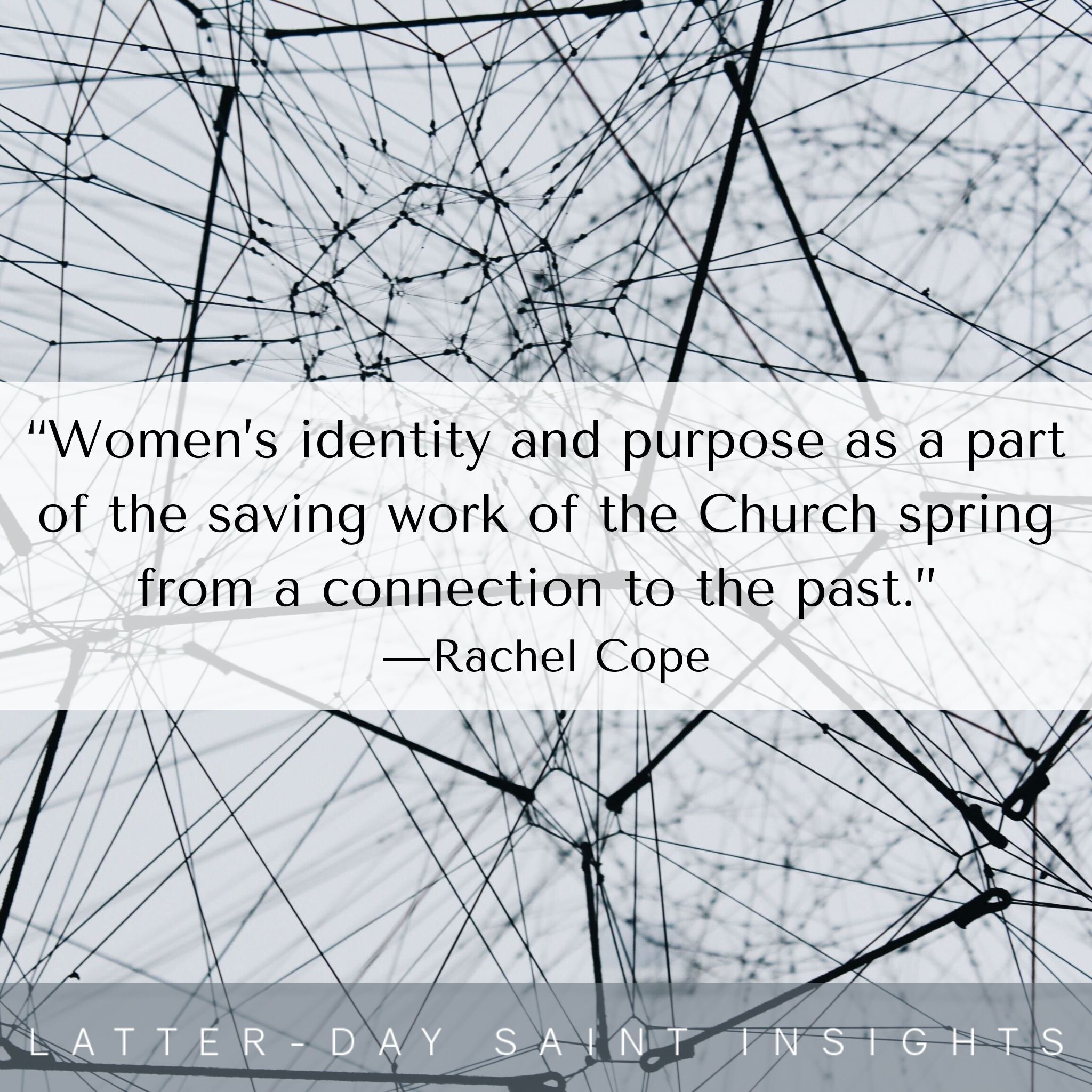Remembering the history of the Relief Society has the potential to strengthen us more than we might think.
The Relief Society is made up of 7.1 million women, making it one of the largest women’s organizations in the world. And that number only constitutes living women. Imagine if we counted all the women who have ever belonged to the Relief Society, back to the organization’s establishment in 1842. The number seems mind-boggling.
But why care about Relief Society women of the past? Easy: because our “identity and purpose…spring from a connection to the past.”

Or at least that’s what Rachel Cope says in her essay “Thoughts on Reclaiming the History of Relief Society.” Although some women may describe Relief Society as simply a second-hour Sunday meeting, Professor Cope shakes up this narrative by redefining Relief Society as a God-inspired union powerful enough to change our lives. She teaches us that the earliest Relief Society did not merely exist to offer relief, gather females for neighborhood gossip, or bring refreshments to ward activities. No, the earliest Relief Society did more than that. Professor Cope quotes Carol Cornwall Madsen who credits the instruction given in this organization with opening “a new concept of spiritual participation…which not only enhanced [women’s] position in the church but offered limitless potential in the hereafter.”
Professor Cope makes the past feel precious by conveying the momentous joy that many early Saints felt from joining the Relief Society and having chances to learn, teach, and participate in the work of salvation in ways they hadn’t been able to before. She explains, “Joseph Smith—who had previously focused on instructing and training men—met with and taught members of the Relief Society about their role in the plan of salvation and prepared them for the covenants they would eventually make within the walls of the temple.”
Professor Cope suggests that if we forget this rich history of Relief Society, we give up some of the power that the organization is meant to offer us. Conversely, when we remember its history and integrate it into our worship, we open our hearts to receive power compounded through generations of faithful women.
In her article, Professor Cope also introduces us to Emmeline B. Wells, the fifth Relief Society General President and a champion of women. Wells’s self-proclaimed life goal was to “do all in [her] power to help elevate the condition of [her] own people, especially women.” She was the last of five presidents who were there when the Relief Society started, so she tasked herself with educating the next generation on the original meaning of the Relief Society. She copied word-for-word the earliest Relief Society meeting minutes and used them to remind women how and why the organization began in the first place.
Read Rachel Cope’s full article “Thoughts on Reclaiming the History of Relief Society” through the BYU Religious Studies Center to learn more about Emmeline Wells and the establishment of the Relief Society.
Source: Religious Studies Center
—Jamie Kathryn LeSueur, Latter-day Saint Insights
FEATURE IMAGE BY RUBEN RAMIREZ
Find more insights
Check out the Latter-day Saint Insights article “‘Neither Dupes nor Slaves of Men’: Witnesses from Women in Polygamous Marriages” to read more about the female experience from early Church history.
Explore the webpage “The Story of Relief Society” on the Church’s website to read more incredible stories from the women who made Relief Society an incredible organization.



I love this idea of limitless potential for women and having a shared history with the Relief Society. Such important things to remember!